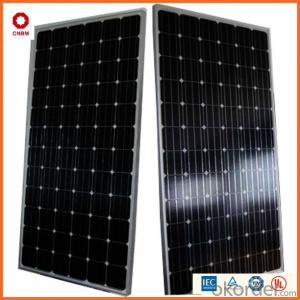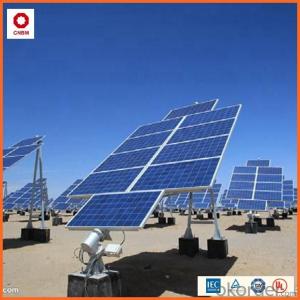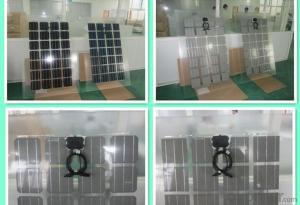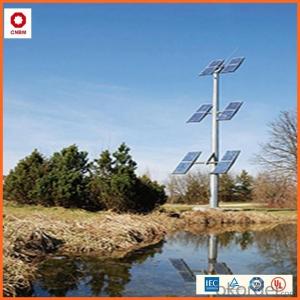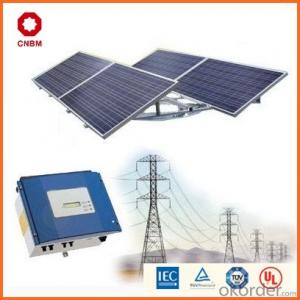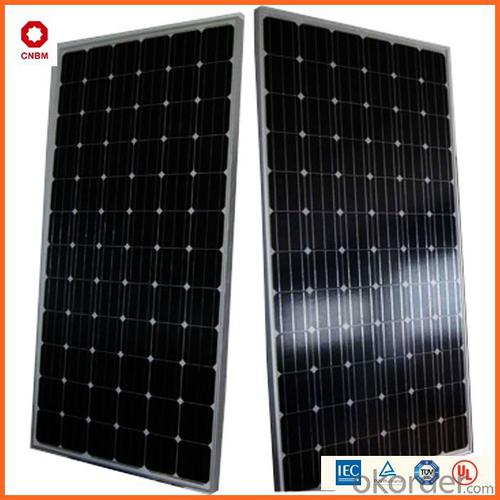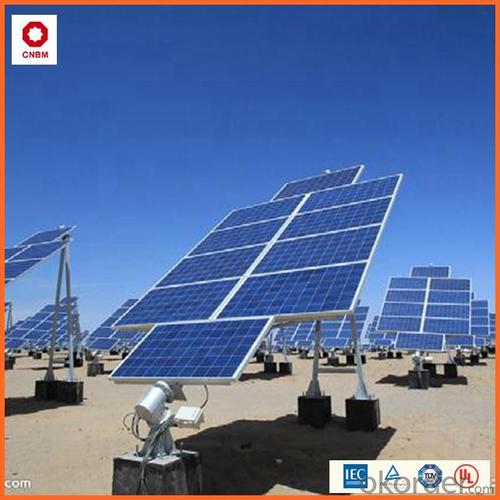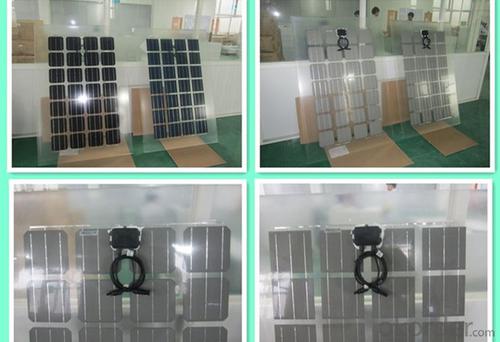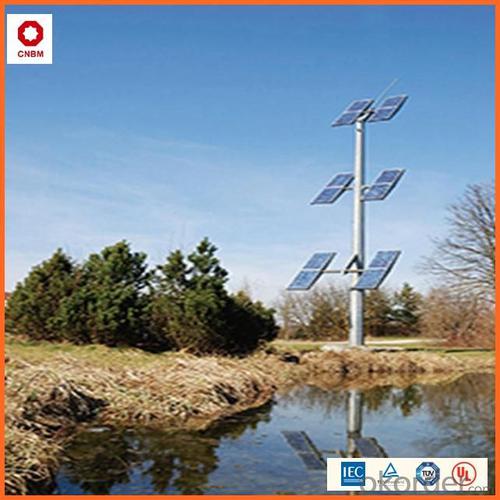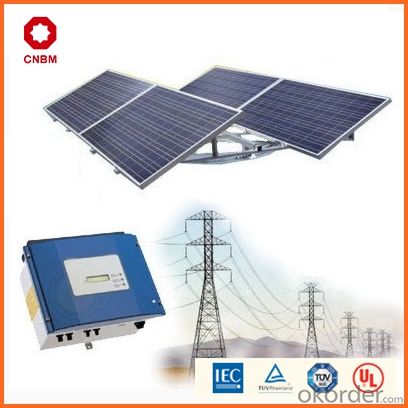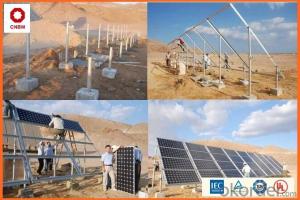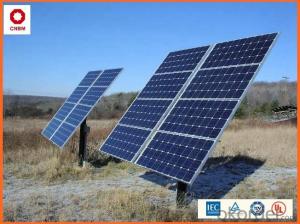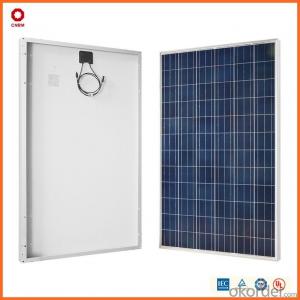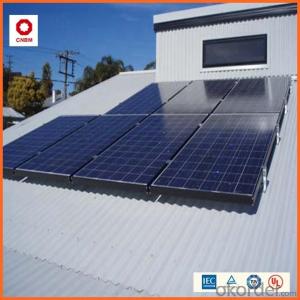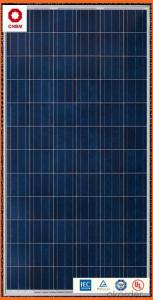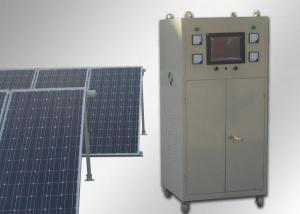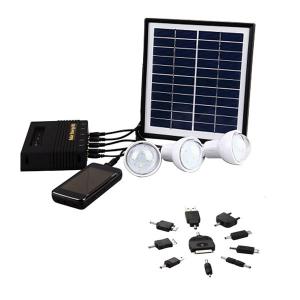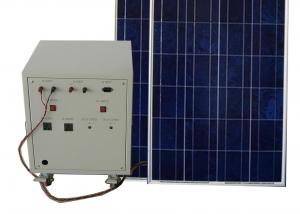80w Small Solar Panels in Stock - Solar Energy Systems Canberra - China Manufacturer
- Loading Port:
- China main port
- Payment Terms:
- TT OR LC
- Min Order Qty:
- 1 watt
- Supply Capability:
- 10000000 watt/month
OKorder Service Pledge
OKorder Financial Service
You Might Also Like
Specification
Product Description:
Hot Sale !!! Quality and Safety of Small Poly Solar Panel 5w~150w
1. Rigorous quality control meets the highest international standards.
2. High-transmissivity low-iron tempered glass, strong aluminium frame.
3. Using UV-resistant silicon.
4. IS09001/14001/CE/TUV/UL
Warranties of Small Poly Solar Panel 35~85w
1. 10 years limited product warranty
2. 15 years at 90% of the minimal rated power output
3. 25 years at 80% of the minimal rated power output
Specification
Characteristics of Poly solar panels CNBM (245-320W) | |||||
Max Power Voltage Vmp(V) | 30.3 | 30.8 | 31.1 | 31.4 | 31.85 |
Max Power Current Imp(A) | 7.60 | 7.64 | 7.73 | 7.81 | 7.85 |
Open Circuit Voltage Voc(V) | 36.1 | 36.6 | 37 | 37.3 | 37.68 |
Short Circuit Current Isc(A) | 8.50 | 8.55 | 8.65 | 8.75 | 8.85 |
Max Power Pm(W) | 230W | 235W | 240W | 245W | 250W |
Temperature Coefficient of Cells Poly solar panels CNBM (245-320W) | |
NOCT | 45± 2 |
Temperature Coeffucients of Isc | 0.0492 |
Temperature Coeffucients of Voc | -0.3374 |
Temperature Coeffucients of Voc | -0.4677 |
Mechanical Data of Poly solar panels CNBM (245-320W) | |
Dimension | 1638 × 982 × 40 mm |
Weight | 19.5 kg |
No. of Cells and Connections | 60 (6 ×10) |
Tolerance | 0 ~ + 5 W |
Cell | Monocrystalline Cell 156 × 156 mm |
Packing | 624 Pcs/40ft(H) Container |
Limits of Poly solar panels CNBM (245-320W) | |
Operating Temperature | -40 to +85 |
Storage Temperature | -40 to +85 |
Max System Voltage | 1000VDC(IEC) / 600VDC(UL) |
Features of our products:
• High conversion efficiency mono/poly-crystalline amorphous silicon solar cells
• Modules incorporate high performance bypass diodes to minimize the power drop caused by shading
• High transmittance, low-iron tempered glass
• High performance EVA encapsulant to prevent destroying and water.
• AI frame: without screw, corner connection. 8 holes on the frame can be installed easily
• Good performance of preventing from atrocious weather such as wind and hails
• Certifications: CE IEC TUV VDE UL, Class I
• 10 years 90% power output warranty
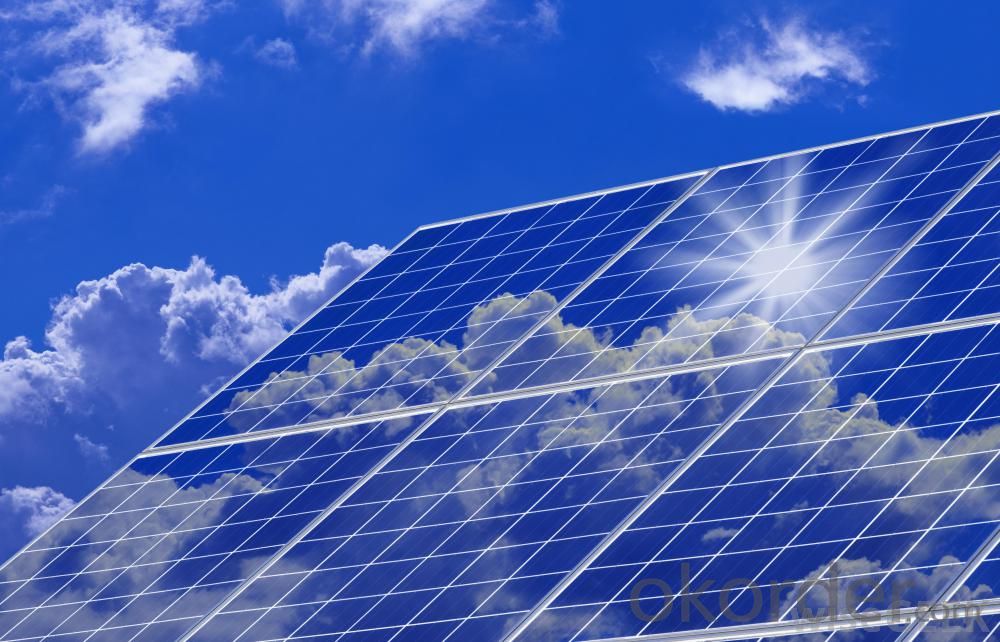
Shipping of Small Poly Solar Panel 35~85w
By Sea | Delivery from Shanghai or Ningbo seaport |
By Air | Departure from Shanghai Pudong Airport |
By Express | Post by DHL, EMS, UPS, TNT. |
Features of our products:
• High conversion efficiency mono/poly-crystalline amorphous silicon solar cells
• Modules incorporate high performance bypass diodes to minimize the power drop caused by shading
• High transmittance, low-iron tempered glass
• High performance EVA encapsulant to prevent destroying and water.
• AI frame: without screw, corner connection. 8 holes on the frame can be installed easily
• Good performance of preventing from atrocious weather such as wind and hails
• Certifications: CE IEC TUV VDE UL, Class I
• 10 years 90% power output warranty
As a professional Solar Panel manufacturer and Supplier in China, we have our customers come around the whole world and our specialization has got a worldwide recognition. Meanwhile, with our superior quality, competitive price, prompt and excellent service, As main role in trade section of CNBM Group, CNBM International Corporation supplies products including Monocrystalline Solar Panel, Polycrystalline Solar Panel ( multicrystalline silicon Solar Panel) have received and enjoyed famous reputation in many countries and regions in the world.
- Q: Can solar energy systems be used in rural areas without access to the power grid?
- Solar energy systems are a viable and sustainable solution for rural areas without access to the power grid. They offer a reliable and sustainable source of electricity, making them ideal for off-grid communities. By capturing sunlight and converting it into usable electricity through photovoltaic technology, solar panels can power lights, appliances, and other electrical devices in homes, schools, healthcare facilities, and businesses. One of the main advantages of solar energy systems in rural areas without access to the power grid is their independence from traditional utility companies. These systems can operate autonomously, allowing communities to generate their own electricity without relying on external power sources. This is especially beneficial in remote areas where extending power lines from the grid can be costly and impractical. Furthermore, solar energy systems have a long lifespan and require minimal maintenance, making them suitable for rural areas with limited resources and technical expertise. Additionally, solar panels produce clean energy, reducing reliance on fossil fuels and minimizing the environmental impact. Moreover, solar energy systems can be combined with energy storage solutions, like batteries, to store excess electricity generated during the day for use at night or during periods of low sunlight. This ensures a continuous power supply even without direct sunlight. In conclusion, solar energy systems offer a reliable and sustainable solution for rural areas without access to the power grid. They provide reliable electricity, reduce dependence on fossil fuels, and offer long-term cost savings.
- Q: Can solar energy systems be used in powering disaster relief centers or emergency shelters?
- Yes, solar energy systems can definitely be used in powering disaster relief centers or emergency shelters. In fact, solar power is increasingly being utilized in such situations due to its numerous benefits. One of the key advantages of solar energy systems is their ability to function independently of the grid. During natural disasters or emergencies, the conventional power grid may be disrupted or completely unavailable. In such situations, solar panels can generate electricity from sunlight, providing a reliable and sustainable source of power for essential operations in relief centers or shelters. Solar energy systems are also highly portable and modular, making them ideal for temporary installations. They can be quickly deployed and set up in disaster-stricken areas, providing immediate power for lighting, communication devices, medical equipment, and other critical needs. Additionally, solar energy systems can be easily expanded or modified to meet the increasing energy demands of relief centers or shelters as the situation evolves. Furthermore, solar power systems have minimal environmental impact compared to traditional fuel-based generators. They produce clean energy without releasing harmful pollutants or greenhouse gases, which is particularly important in disaster-stricken areas where air quality may already be compromised. Lastly, solar energy systems offer long-term cost savings. Once installed, solar panels require minimal maintenance and have a lifespan of 25-30 years. This reduces the reliance on expensive and often scarce fuel supplies, allowing relief centers and emergency shelters to allocate their resources more efficiently. In conclusion, solar energy systems are a reliable, sustainable, and cost-effective solution for powering disaster relief centers or emergency shelters. Their ability to function independently, portability, minimal environmental impact, and long-term cost savings make them an excellent choice for powering critical operations during times of crisis.
- Q: Can solar energy systems be used in conjunction with backup generators?
- Yes, solar energy systems can be used in conjunction with backup generators. This combination allows for a reliable and uninterrupted power supply, as solar panels can generate electricity during the day while excess energy can be stored in batteries or fed back into the grid. Backup generators can then be used as a secondary power source during periods of low solar generation or in case of emergencies.
- Q: What is the impact of dust or dirt on solar panel efficiency?
- The impact of dust or dirt on solar panel efficiency is significant. When dust or dirt accumulates on the surface of the solar panels, it forms a layer that obstructs sunlight from reaching the photovoltaic cells. This reduces the amount of sunlight that can be converted into electricity, thereby lowering the efficiency of the solar panels. Regular cleaning and maintenance of solar panels are crucial to ensure optimal performance and maximize energy production.
- Q: How do solar energy systems affect roof maintenance?
- Solar energy systems can actually help extend the lifespan of roofs and reduce the need for regular maintenance. This is because solar panels act as a protective layer, shielding the roof from various weather elements such as rain, snow, and UV rays. Additionally, solar panels can prevent debris from accumulating on the roof's surface, reducing the risk of damage or leaks. However, periodic inspection and cleaning of the panels may be required to ensure optimal performance and to address any potential issues.
- Q: What is the difference between a solar energy system and a solar thermal system?
- A solar energy system refers to a broader term that encompasses both solar thermal systems and photovoltaic systems. Solar thermal systems specifically focus on converting sunlight into heat energy, which is then used for heating water or space. On the other hand, photovoltaic systems convert sunlight directly into electricity using solar panels.
- Q: Can solar energy systems be used during power outages?
- Yes, solar energy systems can be used during power outages, as long as they are equipped with battery storage. The batteries store excess solar energy generated during the day, allowing it to be used at night or during power outages. This provides a reliable source of electricity even when the grid is down.
- Q: How does the efficiency of solar panels vary between manufacturers?
- The efficiency of solar panels can vary between manufacturers due to differences in the materials used, manufacturing processes, and overall design. Some manufacturers may use higher-quality materials and advanced technologies, resulting in more efficient panels that can convert a higher percentage of sunlight into electricity. Additionally, variations in the size, shape, and arrangement of solar cells can also impact efficiency. Therefore, it is important to consider the reputation, research, and testing conducted by different manufacturers when comparing the efficiency of solar panels.
- Q: What are the different mounting options for solar panels?
- The different mounting options for solar panels include roof mounts, ground mounts, pole mounts, and tracking mounts. Roof mounts are the most common and are installed directly on the roof of a building. Ground mounts are placed on the ground and offer flexibility in terms of positioning and tilting. Pole mounts are installed on poles or posts, suitable for areas with limited space or uneven terrain. Tracking mounts are advanced systems that move the solar panels to track the sun's position throughout the day, maximizing energy production.
- Q: How much space is required for a solar energy system?
- The space required for a solar energy system varies depending on factors such as the size and capacity of the system, the type of solar panels used, and the amount of energy needed. Generally, a typical residential solar energy system requires anywhere between 100-400 square feet of roof space for installation. However, ground-mounted systems or larger commercial systems may require significantly more space. It is recommended to consult with a solar energy professional to determine the specific space requirements for your desired system.
Send your message to us
80w Small Solar Panels in Stock - Solar Energy Systems Canberra - China Manufacturer
- Loading Port:
- China main port
- Payment Terms:
- TT OR LC
- Min Order Qty:
- 1 watt
- Supply Capability:
- 10000000 watt/month
OKorder Service Pledge
OKorder Financial Service
Similar products
Hot products
Hot Searches
Related keywords
